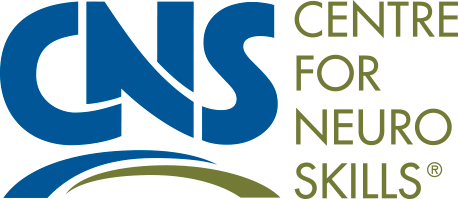Texas Neuro-Optometrist Brings a Vision of Hope to Patients
Brain trauma often causes vision deficits, a frustrating reality that complicates a patient’s ability to walk, achieve balance, and return to work post injury. Because vision affects other sensory functions, these deficits can impair judgment, focus, and spatial orientation. This impacts a critical milestone in recovery – safely navigating in real world settings.
Centre for Neuro Skills has offered a comprehensive vision program for over 20 years, providing therapies and technologies that can build new pathways in the brain and correct visual damage.
Dr. Charles Shidlofsky, OD, FCOVD, is a Plano, TX neuro-optometrist who consults with the CNS Dallas facility, offering clinical expertise to people with traumatic brain injury (TBI) and stroke. He has been in practice since 1988. “It’s like physical or occupational therapy for the eyes,” he says, referring to the extensive evaluation and therapy he offers at his clinic, Neuro-Vision Associates of North Texas. “We work to rebuild function that was compromised by trauma.”
Post trauma vision syndrome and visual midline shift syndrome are the two most common issues he sees in TBI patients.
In-depth Exams Support CNS Care
To decipher the nature and extent of damage, patients come in for three initial appointments. They are:
- A neuro-optometric assessment to test visual skills, eye tracking, spatial orientation, eye teaming, and convergence. Prior to this appointment, Dr. Shidlofsky thoroughly reviews the patient’s case history.
- A neuro sensory exam to determine the patient’s center of balance. He isolates vision and inner ear functions to determine their affect on balance and how well the three entities integrate.
- A thorough consultation to review test results with the patient and CNS occupational therapist. He recommends guidelines and goals for postacute treatment, which identify therapies to utilize at CNS.
Thereafter, Dr. Shidlofsky sees patients monthly–always with their CNS occupational therapist–to review progress.
Texas Neuro-Optometrist Brings a Vision of Hope to Patients
“It’s like physical or occupational therapy for the eyes. We work to rebuild function that was compromised by trauma. We can’t understand the visual system until we know how it interacts with other sensory systems,” he says of the assessment process.
Active and Passive Therapies Enhance Treatment
Specialized lenses are often prescribed, which use a combination of prisms, tints, and occlusion to correct trauma-induced problems. These optometric devices complement treatment at CNS. “I call the lenses ‘passive’ therapy,” he noted. “The ‘active’ therapy is treatment provided at my clinic and at CNS. Both work on specific skills. Each work together, but are separate interventions.”
In his 13 years of working with CNS, Dr. Shidlofsky has seen many TBI and stroke patients return to driving and working, which he considers a victory to celebrate. "We identify the neuro pathways that are damaged, then provide CNS patients with the tools, technology, therapies, and eye wear that bridge the gap between rehabilitation and returning to normal living,” he said.

